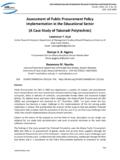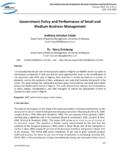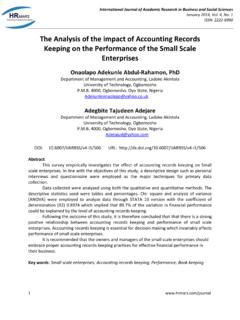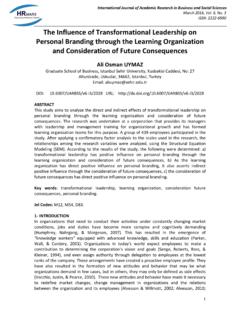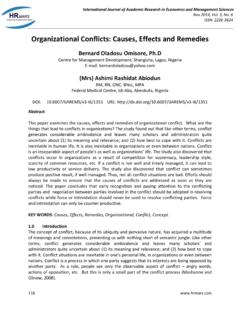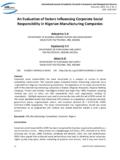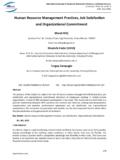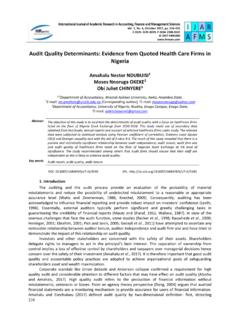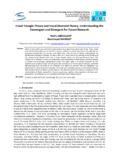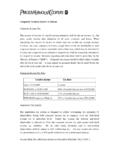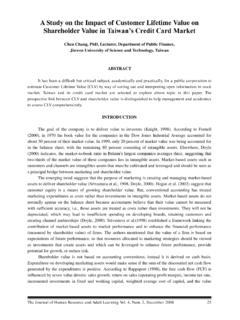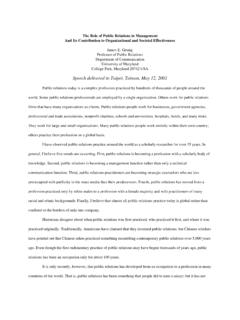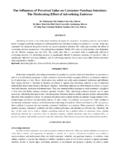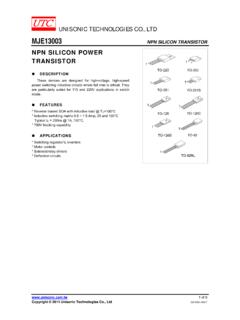Transcription of The Dilemma of Toyota Production System …
1 International Journal of Academic Research in Accounting, Finance and Management Sciences Vol. 5, , January 2015, pp. 1 12 E-ISSN: 2225-8329, P-ISSN: 2308-0337 2014 HRMARS The Dilemma of Toyota Production System Implementation: A Case Study of Taiwan Machine Tool Industries Shi-Yuan LAI1 Chih-Hung TSAI2 Liang-Ying WEI3 Rong-Kwei LI4 Min-Jer LU5 1,4 Department of Industrial Engineering and Management, National Chiao-Tung University, HsinChu, Taiwan 2,3 Department of Information Management, Yuanpei University of Medical Technology, HsinChu, Taiwan, 2E-mail: (Corresponding author) 5 Department of Food and Beverage Management, Yuanpei University of Medical Technology, HsinChu, Taiwan Abstract Recently, many enterprises have implemented the Toyota Production System (TPS) in order to improve their Production performance and competitiveness.
2 However, some of those enterprises which implemented TPS couldn t improve performance, even led to worse Production performance. Dr. Goldratt thought the reason enterprises adopted TPS finally failed was due to their basic Production environments was different of Toyota . Toyota Production System is built up in a stable environment, but most companies weren t stable as Toyota . Besides, enterprises implemented TPS did not follow the Ohno s four steps may also lead to poor performance. This study discusses whether Taiwan Machine Tool Industries is in three different dimensions of the instability of the Production environment. Also, we study that in the unstable environment, the companies follow Ohno s four steps could have better improvement than which not follow. Key words Toyota Production System , Ohno s Four Steps, Unstable Environment DOI: URL: 1.
3 Introduction Toyota Production System (TPS) developed by Taiichi Ohno in 1950 has been successfully applied to Toyota company, and the System is a major factor for achieving Toyota company so successfully. TPS continues to improve Toyota in Production processes, supplier management, distribution pattern, research innovation, and creates current stable Production environment. In Production part, Toyota can cost down effectively. Average profit of Toyota is 70% higher than industry average in sale part. The results indicate that Toyota is quite successful in implementation of TPS. In recent years, many companies have implemented TPS, they hope use TPS to improve company constitution and enhance the competitiveness of enterprises. Although there are many successful cases of implementation of TPS, but these cases cannot reach high achievement similar to Toyota .
4 Besides, from the literatures studying about enterprises which implement TPS, we can find many failure cases about foreign companies applying TPS. For example, in Pardi s (2007) study, cumulative loss for Toyota Burnaston factory (TMUK) and France factory (TMMF) is more than 3 billion Euro from 1989 to 2001. Swamidass s (2007) study shows that thousands of manufacturing companies implemented TPS and inventories of partial companies continuingly increase and cannot reduce effectively after implementing TPS. Therefore, many people begin to question why the companies follow Toyota to implement TPS but have led failure. Goldratt (2008/2009) thinks the failure reason for companies implementing TPS is Production environment having different basic dimensions. Goldratt mentions that TPS proposed by Taiichi Ohno is suitable for Toyota Production environment.
5 There are three different facets of environmental stability for International Journal of Academic Research in Accounting, Finance and Management Sciences Vol. 5 (1), pp. 1 12, 2015 HRMARS 2 Toyota as follows: (1) product Life Cycle; (2) demands for each product; and (3) overall Production loading; those are main assumptions for implementing TPS. However, most companies might be in three kinds of environmental instability, resulting in implementing TPS failure. Another failure reason may be that enterprise implements incorrectly TPS. Goldratt (2008) mentioned that there are Ohno's four steps for Taiichi Ohno to develop TPS. First, we must improve Production flowing performance. Second, leading the operation function for time points that factory does not produce. Third, local efficiency must be abolished.
6 Final, we should continue to improve. In general, enterprises do not improve Production flowing performance to implement TPS and fall into local efficiency. Companies improve one of all Production performance and do not consider overall performance. From the literature reviewed above, we can see that some companies implement TPS but cannot improve company s overall performance and possible reasons are that TPS is not suitable applied to different Production environment and enterprises do not obey Ohno s four step for Production improvement. On the other hand, from the TPS concept developed by the Theory of Constraints (TOC) concept and we can find that implementation concept of TOC is similar to TPS. From the case for enterprises implementing TOC, the results show that TOC still implements Ohno s four steps to improve Production under unstable Production environment and enterprises can obtain significant effect in short time.
7 Therefore, this study would verify the concept proposed by Goldratt (2008), and evaluate whether unstable Production environment and incorrect implementation are major reason to cause implementing TPS failure. 2. Literature review Manufacturing historical perspective Manufacturing industry is built by two thinkers, Henry Ford and Taiichi Ohn. Ford utilizes the flow lines to reform mass Production method. Taiichi Ohno improves mass Production method to higher level by Ford s view point; that is today s TPS. TPS causes industry to change the understandings of inventory; assets become liability. Henry Ford and Taiichi Ohno improve Production by obeying Ohno s four steps as follows (Goldratt, 2008): (1) improving flow performance is primary goal of operation; (2) The primary objective should be transformed into a set of pragmatic mechanisms to lead the operation function for time points that factory does not produce; (3) local efficiency should be abolished; and (4) a focus program for balancing flow performance should be ready.
8 Toyota Production System (TPS) The main idea of TPS is to eliminate waste in order to find more potential problems by reducing inventory, and to explore real problems. TPS would discover real reason and regulate it. In the organizational culture, TPS trains talented person and commits continuous improvement. The two important factors of TPS are just in time (JIT) and Jidoka (Womack et al., 1990; Liker and Meier, 2006; Womack and Jones, 1996; Sugimori et al., 1997). Toyota Production environment Pardi (2007) investigates Toyota Production environment, and he finds that enterprise must meet following three facets to implement TPS efficiently: (1) ensure stability of long-term cooperation between company and employees; (2) market demand is stable and under controllable state; (3) reliable resiliency of suppliers.
9 Pardi (2005) studies European Toyota factories and the results show that the factory conditions do not meet the three facets, resulting in the implementation of TPS failure. The TPS development took 20 years for such a good performance since 1965. Pardi believes that there must be a long-term index for implementing TPS. Otherwise the business owner will fail to implement TPS. Goldratt (2008) considers that required assumption of TPS Production environment is a stable environment, and Production environment requires stability with three different facets as follows: (1) producing procedure and product are no significant change in a period of time; (2) demand for each product is stable within a period of time; (3) total load for using resource of order is stable. International Journal of Academic Research in Accounting, Finance and Management Sciences Vol.
10 5 (1), pp. 1 12, 2015 HRMARS 3 Theory of Constraints (TOC) TOC is proposed by Dr. Goldratt in 1986 (Umble et al., 2006; Wu et al., 2013; Huang et al., 2014). Dr. Goldratt believes that there are bottlenecks in every System and bottlenecks limit the output of the entire System . Therefore, if you want to enhance output of the overall System , it is necessary to carry out bottlenecks. TOC most utilizes practical Production management method such as buffer management (BM) and simplified drum-buffer-Rope (S-DBR). Schragenheim (2006a/2006b/2006c/2009) thinks S-DBR has the following advantages: (1) a simple and efficient method of Production planning; (2) focus on schedule of capacity constrained resource (CCR) to deplete CCR Production capacity; (3) on-time delivery of orders; (4) provide optimum Production plan.
